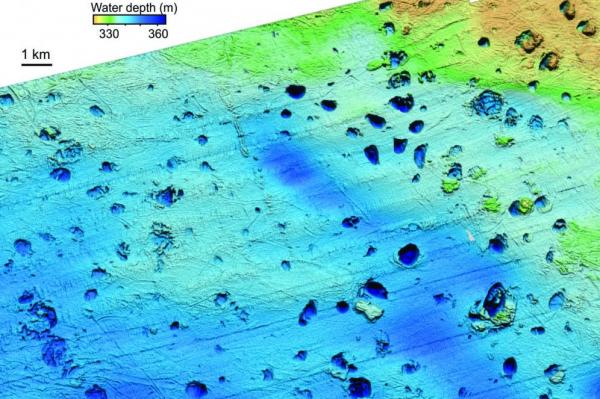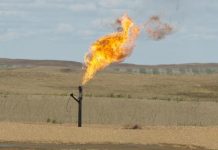
June 2 (UPI) — Scientists have discovered hundreds of large craters littering the floor of the Arctic Ocean, some of which measure a few thousand feet across.
Researchers determined the craters were formed more than 12,000 years ago by explosive methane blow-outs. Methane continues to seep from the craters today.
“The crater area was covered by a thick ice sheet during the last ice age, much as West Antarctica is today,” Karin Andreassen, professor at CAGE Centre for Arctic Gas Hydrate, Environment and Climate, said in a news release. “As climate warmed, and the ice sheet collapsed, enormous amounts of methane were abruptly released. This created massive craters that are still actively seeping methane.”
Researchers found the craters on the floor of the Barents Sea, a region of the Arctic Ocean abutting the northern coasts of Norway and Russia. Scientists focused on craters measuring between 1,000 and 3,000 feet across, of which they found more than 100. Surveys revealed the presence of several hundred more smaller craters.
Similar craters have been found on the Siberian peninsulas Yamal and Gydan, but the largest measure just a few hundred feet across.
Oceanic crust in the Arctic still hosts large gas reserves. The gas combines with water to form hydrates, an ice-like mixture, which at cold temperatures remains stable and trapped in sediment layers.
Ice sheets help keep hydrates trapped beneath the surface, but as gas from below continues to feed hydrates, pressure builds and gaseous mounds on the ocean floor bulge. At the end of the last ice age, as ice sheets retreated, over-pressurized hydrates exploded upward.
“The principle is the same as in a pressure cooker: if you do not control the release of the pressure, it will continue to build up until there is a disaster in your kitchen,” Andreassen said. “These mounds were over-pressured for thousands of years, and then the lid came off. They just collapsed releasing methane into the water column.”
Such explosions are rare and thus not well-studied, but as glaciers and ice sheets on Earth’s poles continues to melt and retreat, methane blow-outs could happen more frequently.
“Our study provides the scientific community with a good past analogue for what may happen to future methane releases in front of contemporary, retreating ice sheets,” said Andreassen.
Andreassen and her colleagues published their research in the journal Science.






